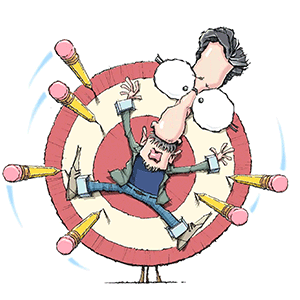How to Choose the Right LED Tractor Lights for Your Needs
Published in Business Articles
When you’re working on the farm, the right equipment can make all the difference. LED tractor lights are a must-have for staying visible during nighttime tasks or in low-light conditions.
But with so many options out there, how do you pick the right one? Here’s a simple guide to help you choose the best LED lights for your tractor and get the job done right!
Understanding Brightness and Lumens
Brightness is a key factor when choosing LED tractor lights. Brightness is measured in lumens.
The higher the lumens, the brighter the light. Brighter lights improve visibility in dark conditions.
For most farming jobs, lights between 1,500 and 3,000 lumens work best. They offer great visibility without being too harsh on your eyes. It’s also helpful to choose lights with adjustable brightness, so you can adjust them for different tasks or lighting conditions.
Durability and Weather Resistance
Tractor lights need to handle tough conditions like rain, snow, and extreme temperatures. Many good-quality LED lights have an IP rating, which shows how resistant they are to dust and water.
Look for lights with at least an IP67 rating. This means they are dustproof and can survive being submerged in water up to 1 meter. Also, ensure the materials are strong enough to handle the vibrations and impacts from working on the tractor.
Ease of Installation
The installation process can play a big role in choosing the right LED tractor lights. Some lights have complex wiring that needs a professional, while others are easy to install on your own.
Before buying, check out customer reviews or installation guides. Some lights even offer plug-and-play systems.
Also, think about how much time you’re willing to spend on installation. Choosing a light that’s easy to install will save you time and effort.
Energy Efficiency and Lifespan
One of the main benefits of LED tractor lights is their energy efficiency. They use up to 80% less power than traditional halogen lights. This can lower your energy costs, which is especially important for large operations.
Plus, LEDs last much longer so you won’t need to replace them as often. This means fewer maintenance costs and big savings in the long run.
Choosing the Right Type of LED Tractor Lights
Choosing the right LED tractor lights depends on what you need for your work. You might need a mix of work lights, flood lights, and spotlights.
Work lights give broad light. An LED flood light is great for lighting wide areas. Meanwhile, spotlights help with long-range visibility.
To get the most out of your setup, consider using different types of lights in different spots on your tractor. If you’re working on bigger projects, it might be beneficial to buy industrial LED lights to improve your lighting system.
Budget Considerations
Your budget will play a big role in your decision. Prices can vary a lot, so it’s important to set a budget first.
Cheaper LED light options might seem tempting. But, spending a bit more on high-quality LED tractor lights will save you money in the long run.
Cheaper models often wear out faster and don’t provide as much light. This means you’ll need to replace them more often.
Choose the Right LED Tractor Lights with this Guide
Choosing the right LED tractor lights means considering many factors. By doing some research and knowing what you need, you can improve both safety and productivity on the job. The right LED tractor lights will not only help you see better but also improve your performance.
Is this article helpful? Keep reading our blog for more.











Comments